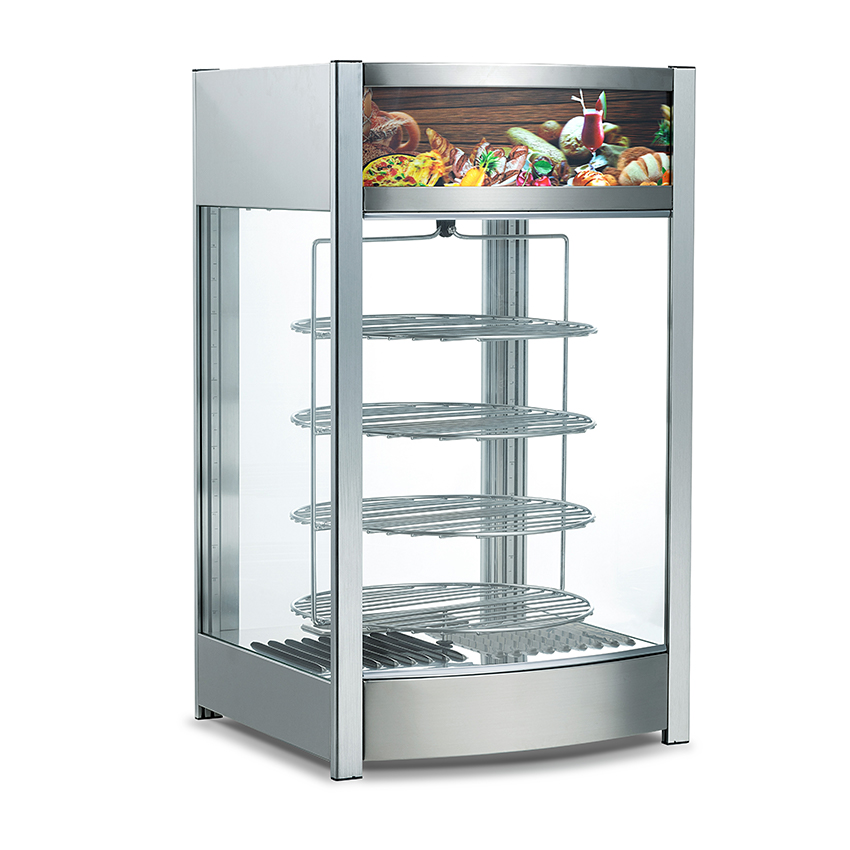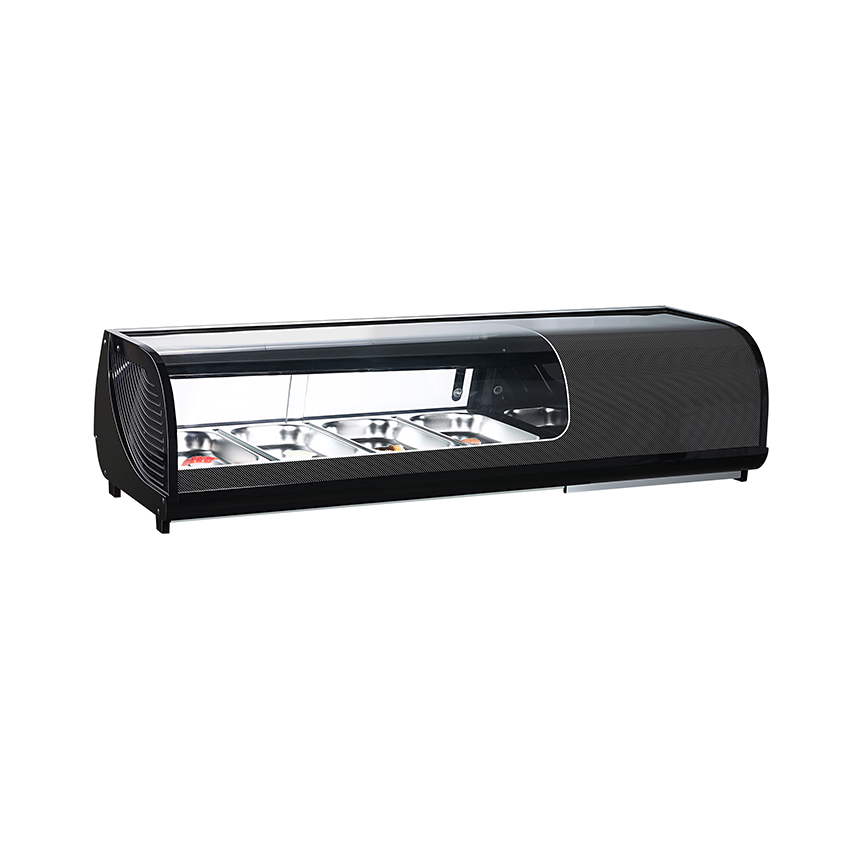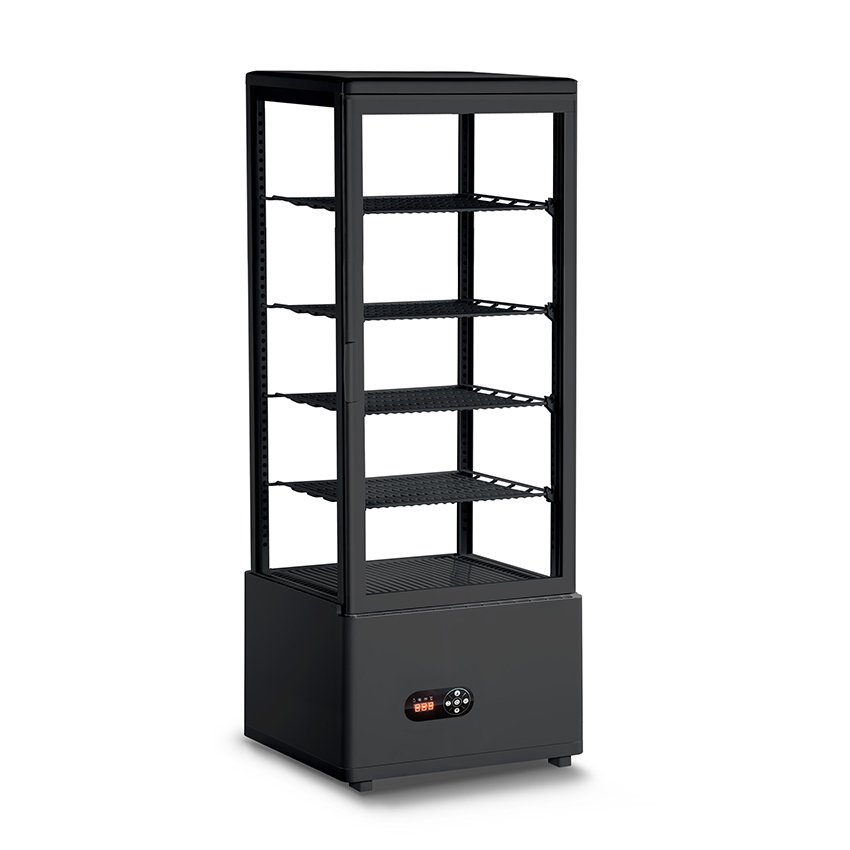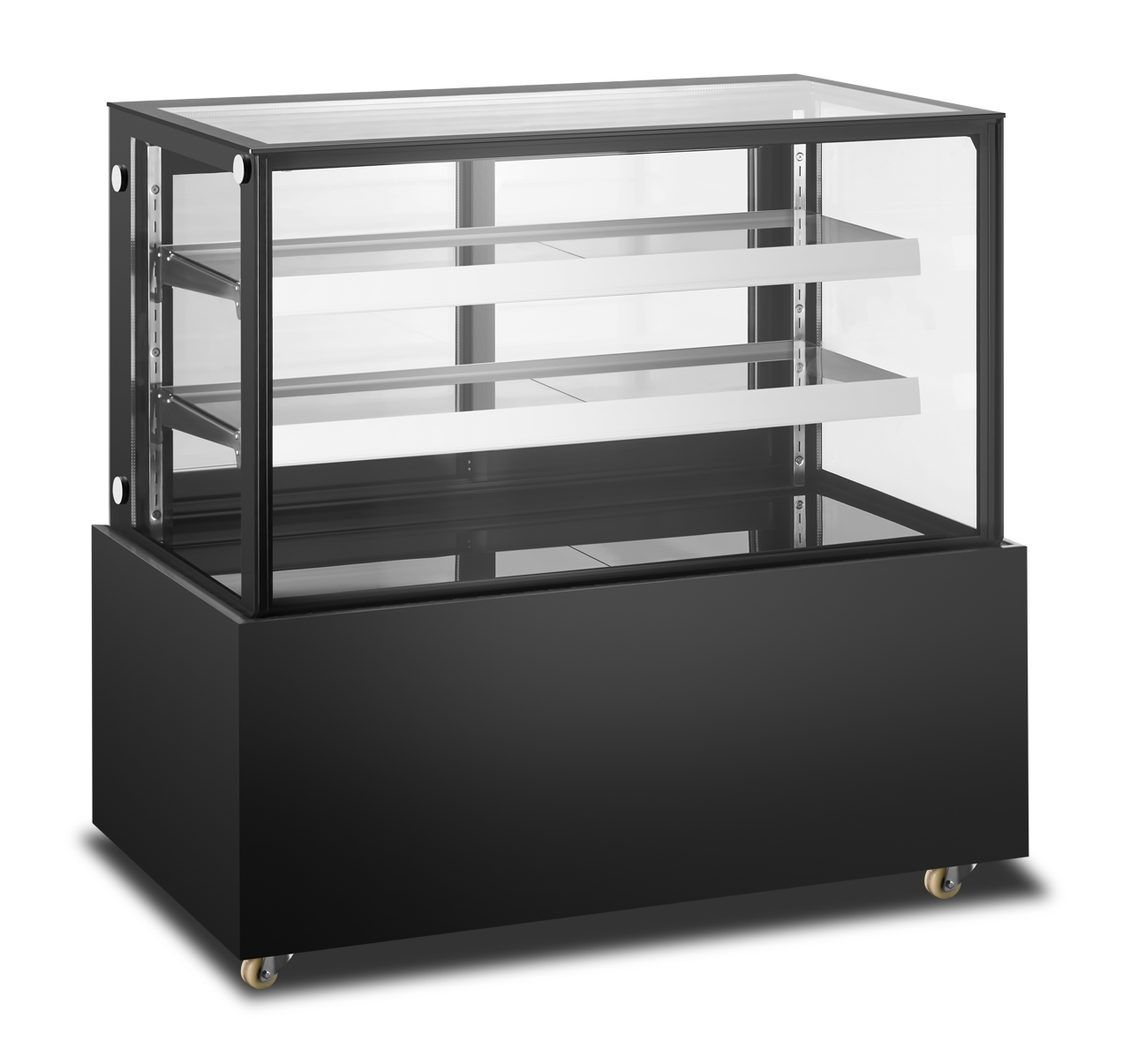Tabletop hot cabinets are "food preparation accelerators" for many food service businesses (such as fast food, takeout shops, milk tea shops, and convenience stores). To maximize their efficiency, a systematic approach is needed across three levels: equipment management, process optimization, and product pre-processing.
1. Equipment Optimization: Keeping the Hot Cabinet "Always Ready"
Scientific Zoning and Labeling
Fixed Storage: Assign fixed locations to each type of food or ingredient (e.g., fried chicken legs, hamburgers, fries, egg tarts). All employees clearly know "where everything is," forming muscle memory and avoiding searching and hesitation.
Clear Labels: Affix prominent product name labels to each compartment or shelf, allowing even new employees to quickly get started.
Precise Temperature and Humidity Management
Differentiated Settings: Different foods have different requirements for temperature and humidity. For example: Crispy items (fried chicken, fries): Use a low-temperature zone with no or low humidity to prevent moisture from making them soft.
Staple foods (rice, noodles) and dishes with sauce (curry, stews): Use a medium-high temperature zone with medium-high humidity to prevent drying and hardening.
Preheating and Stability: Turn on the warming cabinet before peak hours to ensure it reaches and stabilizes at the target temperature. Avoid putting in large amounts of room-temperature food during peak hours, which could cause a sudden drop in temperature.

2. Process Optimization: Creating an Efficient Food Flow
"First-In, First-Out" Principle: Strictly implement the FIFO principle. Place newly prepared products at the back or bottom of the stock to ensure that products at the front are taken first. This not only reduces waste but also prevents employees from rummaging through old stock.
Standardized Stocking and Replenishment
"Golden Reserve Level": Set a minimum stock level in the cabinet for each product. When a product reaches this level, the kitchen immediately receives a replenishment signal and begins batch production. This avoids the awkward gap of starting production only after the product is sold out.
Bulk Replenishment: Replenish stock during off-peak hours or short breaks to avoid frequent opening and closing of cabinets during peak periods, which can lead to significant heat loss.
Optimize Food Serving Procedures: **Tool Placement:** Place tongs, food tongs, gloves, and packaging bags next to the warming cabinets so employees can retrieve and pack food without turning or moving.
Assembly Line Collaboration:Place the warming cabinets at the core of the food serving flow. For example, employee A retrieves the main dish from the warming cabinet, employee B adds side dishes and sauces, and employee C packs and seals the food, creating an efficient assembly line operation.
3. Product and Menu Design: Enhancing Efficiency from the Source
Design Menus Suitable for Warming:** Prioritize products whose flavor and texture change less when kept warm. For example, stews, braised dishes, and grilled sausages are better suited for longer warming periods than fried products that need to be eaten immediately.
Pre-packaging and Combinations:For frequently ordered set meals or popular single items, pre-package or semi-pre-package during off-peak hours. For example, hamburgers and their accompanying fries and chicken wings can be placed in a single combo box and stored in the same compartment of the warming cabinet. When serving, simply remove the entire combo box, significantly reducing assembly time.
Integration with the Kitchen: Warming cabinets should not be isolated. The kitchen should adjust production schedules based on front-of-house sales data and the optimal inventory levels in the warming cabinets, achieving "production based on sales" to ensure that products in the warming cabinets are neither out of stock nor suffer from quality degradation due to overstocking.


 English
English русский
русский Español
Español Français
Français عربى
عربى italiano
italiano








